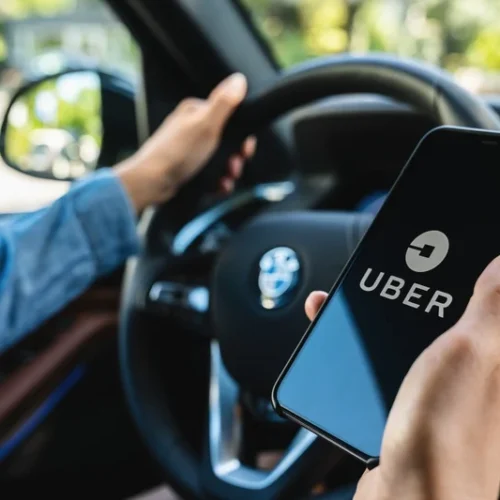Senior RSG contributor Sergio Avedian has been driving for years, and writing for The Rideshare Guy for almost just as long! After talking to thousands of drivers and hosting the Show Me the Money Club on YouTube, Sergio has devised a list of ten don’t’s all drivers should pay attention to if they want to succeed at gig work.
Since I started hosting Show Me The Money Club about ten months ago, every morning, my inbox is full of suggestions from amazing drivers all over the country. I read every single one and respond as soon as possible; keep them coming. Many of these drivers have become my eyes and ears from large to small rideshare markets. It gives me an overview of the general health of the business.
I have been blamed for being too negative about Uber, Lyft, and the gig economy in general. At RSG, I’m here to inform, educate and allow the readers/viewers to make up their own minds, as each market is different, as well are the goals of each individual driver.
After several years of writing for The Rideshare Guy, hosting the Show Me the Money Club on YouTube, and working as a driver and delivery courier, here are the ten “don’t’s” of driving rideshare I’ve learned and gleaned from you, the readers!
10 Don’t’s of Driving for Rideshare for Rideshare Drivers
1. Don’t Forget the Two Rules of Rideshare
Those two rules are: Uber and Lyft will only do what benefits Uber and Lyft. Rule 2: See Rule #1. Knowing this all-important rule lets you formulate your business plan.
This is something that I have been saying for years and will continue to do so. I am definitely not a fanboy of these companies, but without them, millions of people would not be able to earn a living and put food on their family tables. Is everything great with these companies? Absolutely not, but the opportunity is there for hustlers to make the money they need to work towards their Plan B.
2. Don’t Worry About What You Can’t Control
Only focus on the things you can control. We all seem to be upset when Uber or Lyft change the algorithm or cut fares, but that is something out of our control. Keep in mind, rideshare companies’ goals are to be profitable. They need to charge as much as they can and pay as little as they can.
Sometimes, drivers want to look at changes to their earnings as something “happening to them.” Take control of your driving strategies and make changes that benefit you – this also applies to life.
3. Don’t Live in the Past
We will NEVER earn what we did seven years ago. Good is not the enemy of great. A ride that made you $12 profit in 2015 will only make you $8 in profit today. That is still decent!
As much as I miss the old days of the multiplier surges and $50 per online hour earnings, I must agree those days are history but by applying the 3Ps (Patience, Position and Planning), rideshare driving still could be a profitable proposition for many.
4. Don’t Forget to Figure Out Your Expenses Down to the Penny
Figuring out your expenses is the only way to measure your profitability. We interviewed the CEOs of both Uber and Lyft on our Youtube Channel, and they both said the same thing: “all drivers are small businesses.”
I agree with that, and this is where I think the community needs the most help. We say “decline garbage” and “know your worth” on SMTMC. The only way to decline garbage is to know what your Cost Per Mile (CPM) is.
I hear a lot of drivers mention they made $1000 in a week; unfortunately, that could not be further from the truth. They GROSSED that amount, and expenses of a rideshare driver are not just fuel. There is maintenance, depreciation and other factors. Please pay attention to all of the expenses of running a vehicle.
Check out how much it costs to be a rideshare driver here, and stay tuned while Sergio builds a spreadsheet drivers can use to help calculate their costs!
5. Don’t Forget to Have a Business Plan
In your rideshare business plan, you should outline your cost per mile, your living expenses, the minimum amount per mile and minute you’re willing to accept, the number of rides per day, week and month you need to reach your goals, and evaluate honestly how well you know your city.
Once you have this information, do not accept rides below your baseline! Play chess, not checkers.
6. Don’t Get Frustrated When Uber and Lyft Change the Playing Field
Modify your business plan and stay one step ahead of them. For example, use Lyft’s area filter and Uber’s area preference, plus all of your destination filters. You have to play the game with Uber and Lyft. Every time they zig, you must adapt and learn to zag.
I am certain that a lot of drivers give up driving because they get discouraged by the gamification and gamblification on these apps. The last time I checked, the human brain still had some value. What you put into the task is what you will get out of it, be persistent, and keep trying new strategies. The definition of insanity is doing the same thing over and over expecting different results.
7. Don’t Take Out Your Frustrations with Uber and Lyft on the Passenger
Once a passenger is in your car, they are a customer of your business. Any tip you make only increases your per mile earnings. If you’re frustrated by Uber and Lyft, you can try to educate them, but this is a fine balance and if you don’t think you can do it dispassionately, don’t. Most passengers don’t know how little we are paid vs. what they are charged, so if they bring up the cost of rides, that could be an opportunity for you to mention how little of that you actually receive.
Additionally, invest in your business-keep sanitizer, wipes, Lysol, vacuum, steamer, and cleaning supplies in your car. Great service can lead to an increased frequency of tips and added revenue
This is something I can’t emphasize enough. We are in the service industry. I have many articles, with more to come, all about exceptional drivers around the United States. All of them share a common theme – the one mentioned here! Tips are a major part of a driver’s revenue source, and some drivers get tipped by half the passengers while others meander around 10%.
8. Don’t Drive Without a Dash Cam – Ever!
Only a dashcam can protect you from false claims made against you, and a dashcam makes passengers think twice about their intentions, conversations, and false accusations against you.
In today’s society, pictures are worth more than a thousand words. My best advice to a new or veteran driver is to buy a dashcam. It could be a lifesaver and encourages unruly passengers to behave themselves.
Deactivations are running into the thousands on a daily basis by fraudulent rider claims; do not be a victim of circumstance. This is a “must” investment for any rideshare/delivery driver.
Not sure what to buy? Check out our YouTube playlist, where we review a variety of dash cams for drivers:
9. Don’t Buy a Car That is Not Economical
A car purchase/lease is your biggest expense in this business, and if you buy/lease a hybrid, learn how to drive it to maximize MPG. If you buy/lease an electric, know your range, where to charge it, and your limits so you do not get stuck somewhere. Fuel is the second biggest expense you have, so drive efficiently to increase MPG.
Check out our recommendations for the best cars for rideshare drivers here:
Our cars are our offices on wheels. Drivers must understand the economics of buying a good car for rideshare, while also planning ahead since a full-time driver will put around 60-70k miles on their car in one year. If you want to learn more about and possibly purchase an electric car, join our Facebook group for EV gig drivers.
Keep your fixed and variable costs in check to run your business as efficiently as possible. Also, save at least 25% of your weekly GROSS earnings towards the purchase of another vehicle if you are in this as a career.
10. Don’t Blame Others
Your success or failure is in your hands and only your hands. You will likely never be rich doing rideshare; remember that Uber, Lyft and other gig companies do not withhold taxes or contribute to Social Security.
You will make a profit if you have a plan, stick to the plan, modify the plan when necessary, and provide a great experience for your passengers.
Diversify; you are an Independent Contractor (IC), so sign up with as many gig jobs as possible and choose the rides/deliveries that are best for YOU!
Certain things are out of your control. Worrying and complaining about that will get you nowhere other than to a depressed state. Most importantly, relax and have fun. Ultimately, you are a small business and enjoy the stresses and joys of running your small business.
Most of all, remember to be safe out there!
Do you have ‘do’s and don’t’s’ for drivers I didn’t cover? Agree or disagree with me? Let me know in the comments below!
-Sergio @ RSG



